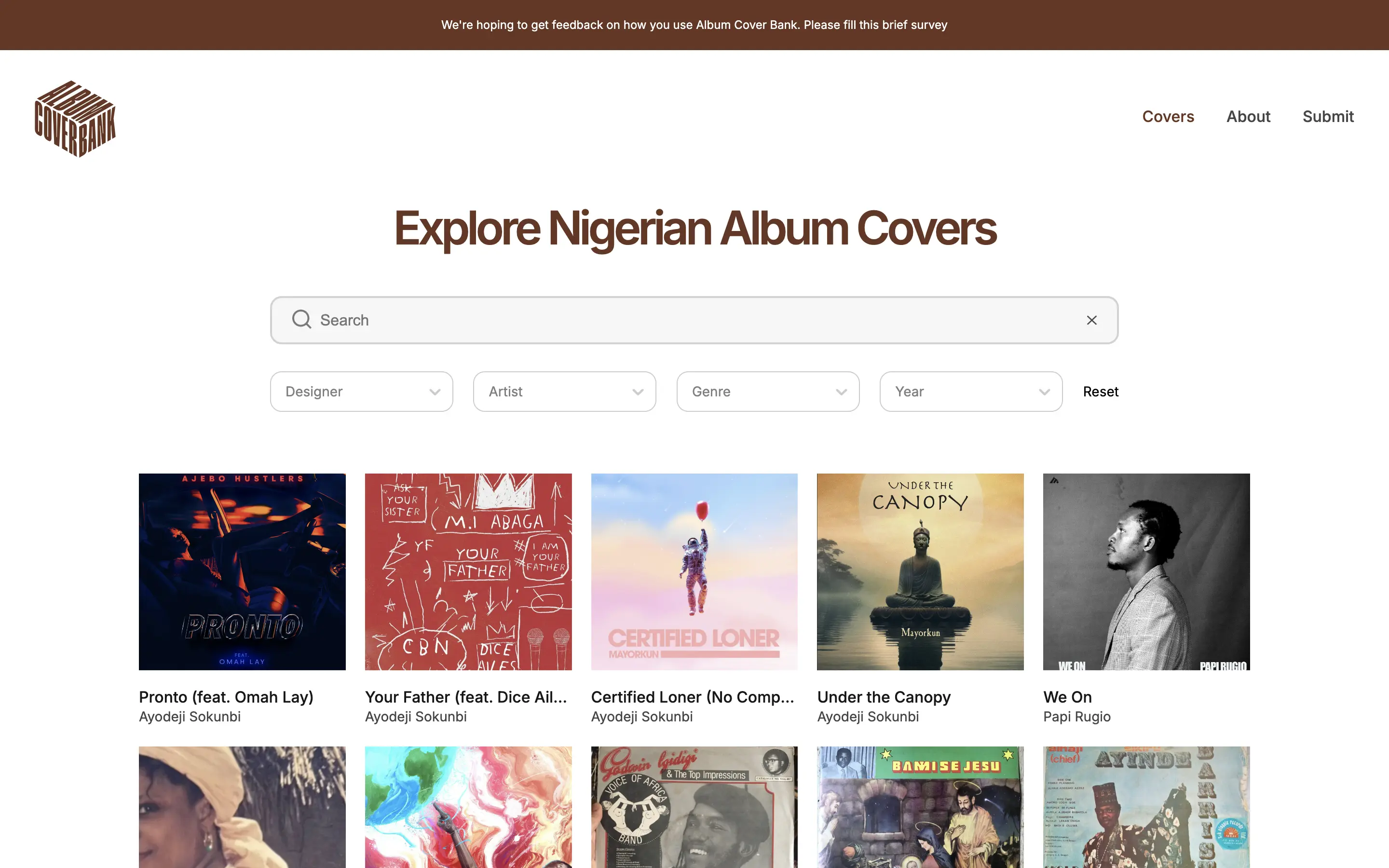The Album Cover Bank is a digital archive holding over 5,300 Nigerian album covers, dating back to the 1950s. The project first launched in 2021 during my time at Independent Arts (formerly wuruwuru) as an exploration of how graphic design trends in Nigerian pop culture have influenced the nation’s music over the decades. Over time, it evolved into an initiative to spotlight cover designers as vital cultural contributors and establish this archive as the go-to resource for discovering Nigerian cover artists.
Initially, the project aimed to explore the history of Afrobeat in Nigeria. However, during our desk research, we realized the scope was too broad, and narrowed our focus to curating a database of Nigerian album cover art as a way to preserve their stories and celebrate the artists behind them. This direction felt especially important as we found that album cover artists in Nigeria don't get enough credit or acknowledgment for their work.

Dating back to the era of vinyl records, cassettes, and CDs, and now in the age of streaming, album covers have always played a pivotal role in shaping how music is represented. Beyond being mere visual representations, album covers often become cultural touchstones, capturing the aesthetics and spirit of their time.
In the digital world, their role has evolved further, and people now showcase their music tastes by sharing screenshots of songs or album covers on social media, or even displaying their favorite album art as prints on their walls.
The next step is to build v1.2 with a well-executed SEO strategy. URLs will be readable, and artists will have profiles showcasing their body of work, which they can easily share with the world.
Regarding the petition I mentioned earlier, there’s growing recognition that album cover artists deserve more credit for their contributions. It would be powerful to bring our voices together and demand the change we want to see. Every designer and artist deserves better recognition for their work—especially now, in an age where AI can generate images for almost any purpose. Preserving the integrity and stories behind these works has never been more important.